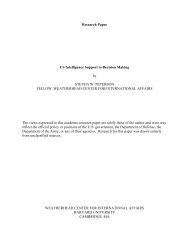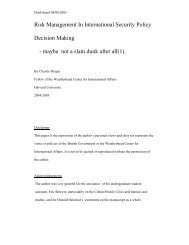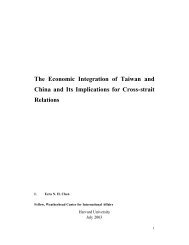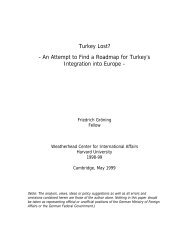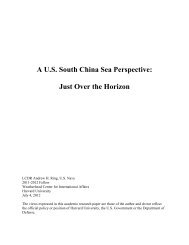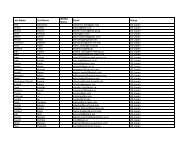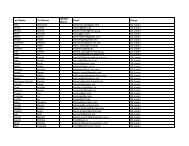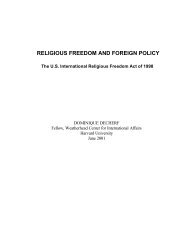A U.S. South China Sea Perspective: Just Over the Horizon
A U.S. South China Sea Perspective: Just Over the Horizon
A U.S. South China Sea Perspective: Just Over the Horizon
You also want an ePaper? Increase the reach of your titles
YUMPU automatically turns print PDFs into web optimized ePapers that Google loves.
<strong>China</strong> maintains complete control of <strong>the</strong> Paracel Islands and occupies nine rocks within<br />
<strong>the</strong> Spratlys. <strong>China</strong> claims undisputable sovereignty over both island groups based on historical<br />
records that date back 2,000 years. The map that <strong>China</strong> submitted to <strong>the</strong> United Nations in 2009<br />
did not clarify this claim, it only created more questions. The nine dashes on <strong>the</strong> map cover more<br />
than 80% of <strong>the</strong> <strong>South</strong> <strong>China</strong> <strong>Sea</strong> and no Chinese official has been willing to provide specifics to<br />
its meaning. The debate continues as to whe<strong>the</strong>r <strong>the</strong> Chinese sees <strong>the</strong> dash lines as delineating its<br />
territorial waters or an EEZ. Regardless, <strong>the</strong> ambiguous nature of <strong>the</strong> claim has benefited <strong>China</strong><br />
in negotiations. Speaking in generalities does not provide any specific facts for rival claimants to<br />
refute during negotiations. However, <strong>China</strong>’s simple aim may be to delay negotiations with<br />
ASEAN to allow <strong>China</strong>’s instruments of influence and control to grow stronger.<br />
<strong>China</strong>’s diplomatic relations have dramatically improved with ASEAN members since<br />
<strong>the</strong> time of <strong>China</strong>’s virtual isolationism beginning at <strong>the</strong> start of Mao Tse-tung’s reign in 1949. In<br />
<strong>the</strong> past decade <strong>China</strong> has established and maintained frequent high-level contact with ASEAN<br />
countries and Chinese leaders have attended a number of important regional multilateral<br />
conferences. In an effort to establish greater ties with ASEAN members, <strong>China</strong> proposed a Free<br />
Trade Area (FTA) in November 2000 that included ASEAN’s ten member nations and <strong>China</strong>.<br />
This shocked most observers because <strong>China</strong> offered <strong>the</strong> trade proposal on <strong>the</strong>ir own initiative.<br />
ASEAN accepted <strong>the</strong> FTA proposal, which reduced tariffs on almost 90% of goods to zero.<br />
When <strong>the</strong> ASEAN-<strong>China</strong> FTA went into full effect in 2010, it represented <strong>the</strong> largest FTA in<br />
terms of population (almost two billion people among <strong>the</strong> eleven countries) and it is regarded as<br />
<strong>the</strong> major reason why ASEAN countries have experienced impressive economic growth and<br />
increased trade in <strong>the</strong> last decade.<br />
32



